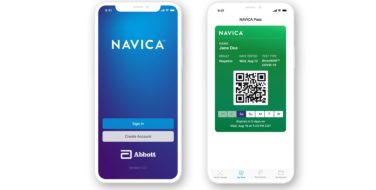By now, most everyone has experienced some sort of “new normal” due to the COVID-19 pandemic, and clinical trials are certainly no exception. In addition to the vast majority of the workforce adjusting to working from home, most sponsors have had to pivot and adjust their ongoing and planned clinical trials.
In a recent survey conducted by SubjectWell, it was reported that 97% of the 207 research sites surveyed expect to continue with ongoing studies, and 54% have not seen a change in patient willingness to participate. Of the 468 patients surveyed, 57% of patients willing to participate in a clinical trial would do so within the next month. Those patients were also much in favor of options that would allow flexibility to participate in a more convenient way.
In just a matter of weeks (which feel like months), many of the following practices have been put into effect. In the event your trial hasn’t experienced disruption yet, you may want to consider proactive planning to keep things running smoothly during COVID-19. No matter your situation, effective communication with the research sites and patients participating in your clinical trials is critical. And if you are still executing direct-to-patient outreach, know this landscape is changing constantly, so pay close attention to the evolving regulations.
Patient Communication
Liza Bernstein, an independent patient advocate, says, “Given the extreme chaos and heightened uncertainties we’re all facing due to COVID-19, trial teams should be going out of their way to communicate with their participants.” She goes on to say, “Any source of kindness and genuine, thoughtful connection will not only be helpful and appreciated in the moment, but will be remembered long after the pandemic. And of course, patients need to know where they stand and where they can get factual, actionable information.”
Some tips for effective, proactive communication include:
- Build a tracker of enrolled patients who may not be coming in for a visit, and schedule check-in calls with them.
- Call patients 24 or 48 hours before their scheduled study visits to give any updates on what to expect when coming into the office, as well as what is expected of them.
- Send out correspondence that details what patients should do or expect if they miss a dose or visit.
- Offer transportation assistance to patients who have upcoming visits. Confirm with the transportation services that they are taking proper steps to decontaminate vehicles after each ride.
- Send out communication to enrolled patients on infectious disease prevention initiatives in place.
- Send out a general message of “We are thinking of you, stay healthy” to patients to let them know they are always top of mind.
- Insert COVID-related information into a site’s newsletter to patients, including resources on mental health, grocery/meal delivery, at-home exercise routines, and links to CDC and WHO updates.
- If your trial changes as a result of COVID-19—whether it’s big or small—be sure to prepare an appropriate and timely correspondence.
Essential Visits
If patients are still required to attend visits in the office or at the site, proper precautionary measures should be taken and communicated to patients and/or their care partners in advance.
- Encourage sites to contact patients if they are running behind schedule to limit exposure while sitting in a waiting room.
- Allow patients to pre-register for visits by phone.
- Rearrange the waiting room to provide appropriate distance between furniture.
- Ask loved ones and caregivers to wait in their vehicle while the patient attends their visit.
- Prearrange convenient parking.
- For pediatric patients, limit caregiver accompaniment to one per patient.
- Consider closing the waiting room entirely by asking patients to call from their vehicle when they have entered the parking lot and to wait for another phone call with instructions for entering the building.
- Implement temperature screening upon entry to the building (for patients and staff).
- Stagger appointment times to limit exposure among patients.
- Assign one staff member to monitor the door, making sure only one person is entering or leaving at a time.
Non-Essential Visits
COVID-19 has accelerated the need for sponsors to adapt to decentralized trials, incorporating strategies such as telehealth, home health visits, remote monitoring, and mobile technologies to either replace or aid in non-essential office visits.
The same SubjectWell survey reported that 61% of patients were in favor of telehealth services, 59% would be open to at-home lab collection kits, and 53% would allow at-home visits from qualified medical staff.
- Consider offering at-home visits for assessments that could be completed by study staff and/or home health nurses going to the patient.
- If home health agencies are engaged, it’s important that patients are “introduced” to their home health practitioner prior to arrival.
- For anyone entering a patient’s home, or any equipment that will be brought in, plan and communicate precautionary measures for sanitization, and ensure proper PPE is available.
- If possible, ship any necessary study medication to a patient’s home, and provide educational information for drug administration.
- Leverage televisits, video chats, and phone interview/screenings between the study coordinator and/or PI where appropriate.
- Prepare for remote monitoring for activities that were previously planned on-site.
One of the most important benefits of trial decentralization is the benefit to the patient. In theory, recruitment and retention should be easier because these efforts allow for greater control, convenience, and comfort for participants. Decentralization should also allow for greater participation among diverse patient populations, as again, trial design can now accommodate patient choice.
Direct-to-Patient Outreach
Popular platforms for communicating and promoting clinical trials, such as Google, Twitter, and Facebook, are starting to release digital advertising guidelines in the wake of COVID-19. These guidelines have been put in place to protect the public from being served misleading advertising messages, but these platforms are also extremely committed to providing valuable information. Since this situation is extremely fluid, the guidelines are as well, so know the target will continue to move.
- Creative elements are being heavily scrutinized—both imagery and copy across all Google platforms. Everything from slapstick humor to imagery showing interactions such as handshakes and hugs is being examined. The guidelines are still somewhat vague, but feedback and delays should be expected. All ads must be uploaded to Google Ads in order to be reviewed and approved prior to running.
- Google currently only allows COVID-19-related advertising that directs to government-registered websites. They are working to lift their ban to allow COIVD-19/coronavirus content on a non-government registered website, but that has yet to be rolled out. If this affects your study website, you may want to direct traffic to the study listing on clinictaltrirals.gov in the meantime.
- Any paid advertising for medical supplies that guarantees prevention of the virus or creates a sense of urgency (e.g., implying a limited supply) is banned. Review the guidelines here.
- Although best practices for clinical trial advertising include never promising treatment, this is an extremely sensitive topic, and any ad mentioning COVID-19 is undergoing a harsh review process and will likely not be approved.
- Turnaround time for ad review, approvals, and appeals may be longer for any advertising campaigns due to the need for Facebook to take extra care in understanding if ads fall within the scope of developing restrictions.
- Facebook is currently working to produce vertical-specific playbooks covering COVID-19, including one for healthcare/pharmaceuticals.
- All COVID-19-related advertising has been strictly prohibited under Twitter’s Inappropriate Content Policy.
- The mention of vaccines, treatments, and test kits is permitted, but only in the form of information from news publishers which have been exempted under the Political Ads Content policy.
Advocacy Outreach
In addition to the paid media outlets mentioned above, direct-to-patient outreach through trusted advocacy groups and patient advocates is equally critical during these unsettling times. While patient recruitment efforts may, in many cases, be paused, educating and communicating with these communities remains essential.
- For existing relationships, sponsors should continue conversations with advocacy partners to keep them updated on study status, whether it’s paused or ongoing with modifications, and provide tips to inform patients of the changes.
- If possible, provide support with educational materials or relevant news updates that can be shared with their members.
- Be mindful that many advocacy groups are stretched thin, as they may be operating with even fewer staff members than usual, and many were forced to cancel fundraisers and conferences that they rely on for fundraising and day-to-day operations.
- Many advocacy groups have shifted their focus to taking care of their members during the pandemic, especially for high-risk patients, offering mental health and other forms of support, and assisting with medication needs ranging from low supply to understanding delivery options.
- If advocacy groups are willing, proactive planning for outreach efforts post-COVID-19 will ensure activity can resume once regulations lighten.
Moving forward, one of the challenges of continuing clinical trials during this epidemic will be balancing the need for both decentralized trials and the need for human touch that patients are used to. It is important that we continue to think about how to make patients feel comfortable and safe if that one-on-one contact with a physician or nurse is lost. In the spirit of adapting quickly and being proactive with our planning, it’s equally important that we start preparing for the post-COVID-19 world and what that means for our clinical trials.









